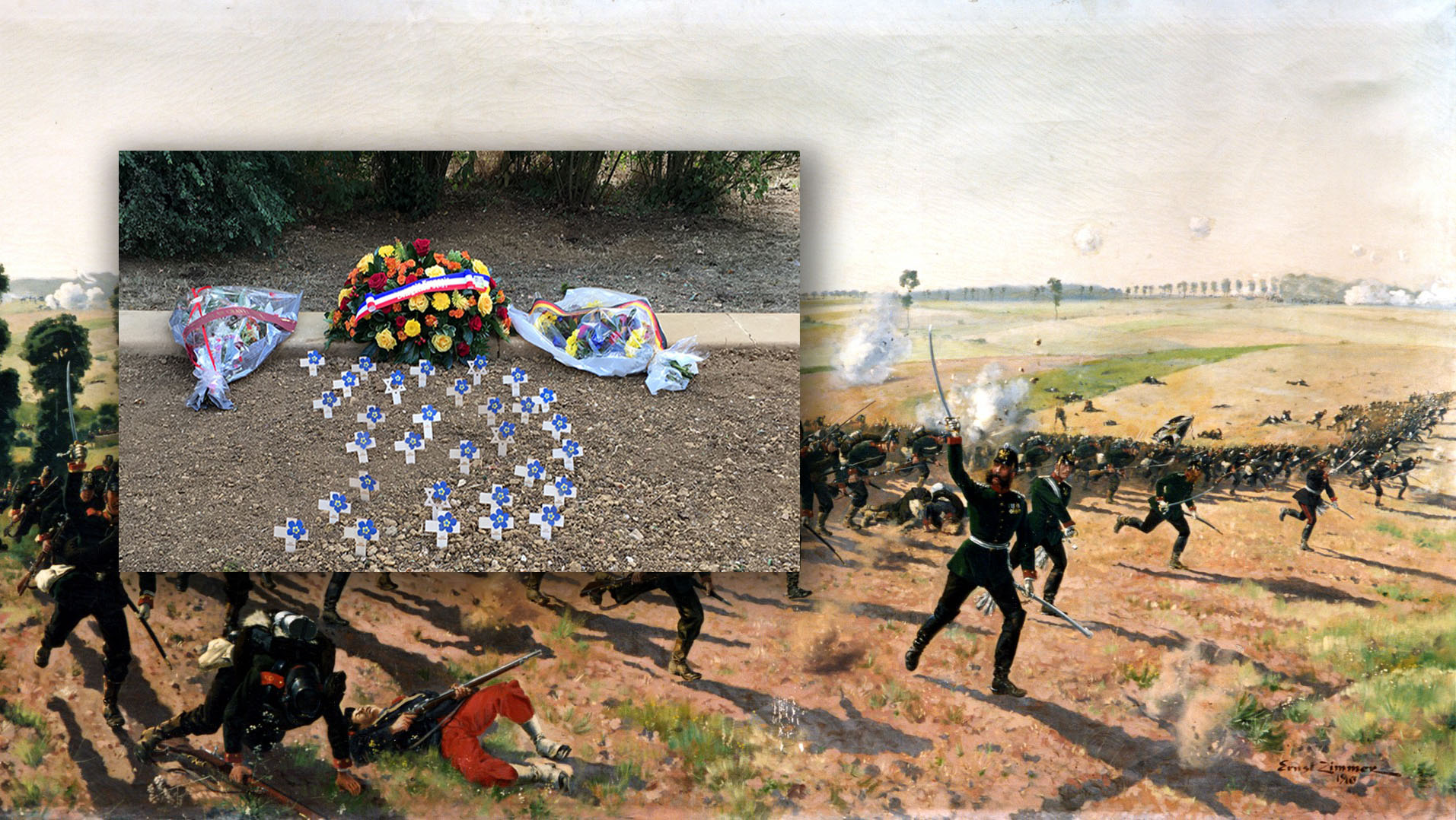Although the 1870-71 Franco-Prussian War seems to be a forgotten chapter in history, the conflict made a startling reappearance when in June a local farmer near Metz, France, came face-to-face with human bones exposed on a forest riverbank. These were the remains of six Prussian soldiers, forgotten for 150 years until they caught the attention of French and German authorities. The remains were formally reburied in Gravelotte, France, in August.
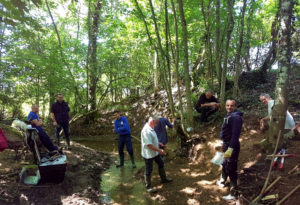
The unusual discovery occurred in a stretch of privately owned forest south of Aubigny Castle. The bones had become visible due to soil erosion from splashing water along the riverbank. The owners of the castle cooperated with French authorities and the German War Graves Commission to facilitate archaeological excavation on the site.
The Franco-Prussian War is known today for its pomp and imperialism; the unknown soldiers who live on in paintings of vast battlefields perhaps leave an impression in our memories with their dashing, colorful uniforms. In a strange twist of fate, pieces of these very uniforms somehow survived the ravages of time—becoming key clues in helping experts identify the remains.
Archaeologists found corroded green buttons, partially with double eyelets, and remnants of dark blue fabric stuck beneath epaulette buttons. These traces helped archaeologists to identify the dead as Prussian soldiers. As the archaeologists carefully removed soil layer by layer with brushes and scanned with metal detectors, they discovered additional bones and numerous metal objects.
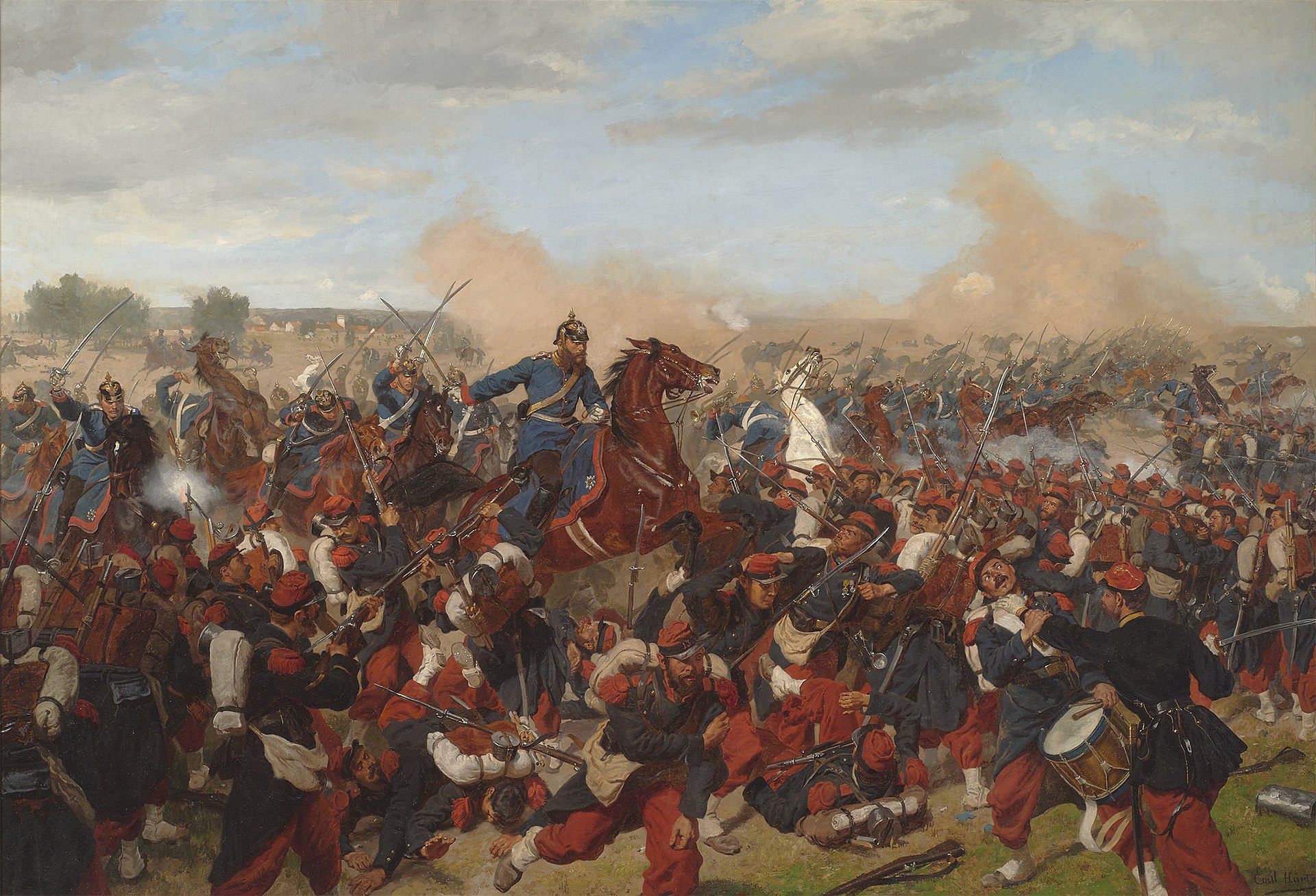
Experts estimate the six soldiers were killed during or after the Battle of Colombey (known in French as the Battle of Borny) on Aug. 14, 1870. This was one of many bloody border clashes between the French and their German opponents led by the Prussians.
During this period in the war, the Germans achieved victories at a heavy cost. German commanders had little regard for the lives of their men and ruthlessly maintained pressure on the battlefield even as their troops were ravaged by the superiority of the French Chassepot rifle. By Aug. 18, 1870, casualties had amounted to an estimated 5,200 German and 1,100 French dead, with an additional estimated 30,000 wounded on both sides.
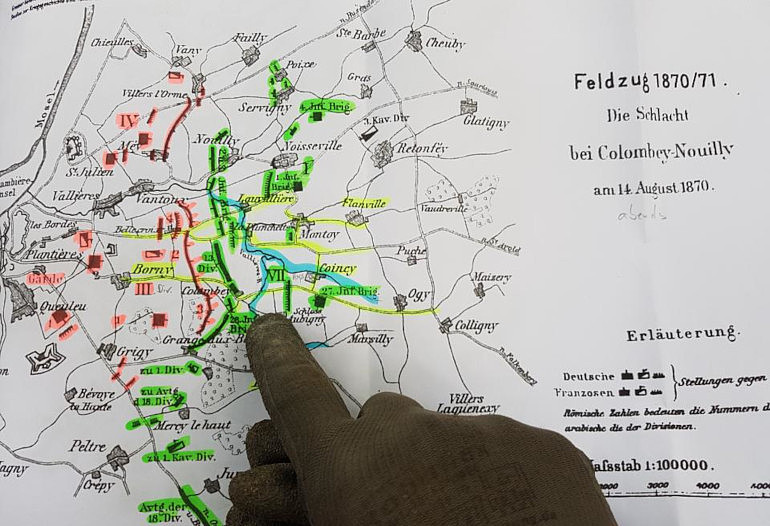
This carelessness earned criticism in an Aug. 21, 1870, report from King Wilhelm I of Prussia, who demanded his officers make better use of their own intelligence and terrain so as to “achieve these same results with fewer [manpower] sacrifices.”
In an odd stroke of harmony, former enemies during the conflict came together to bury the Prussian dead at Gravelotte cemetery on August 14, exactly 150 years to the day after the unknown soldiers’ final battle.
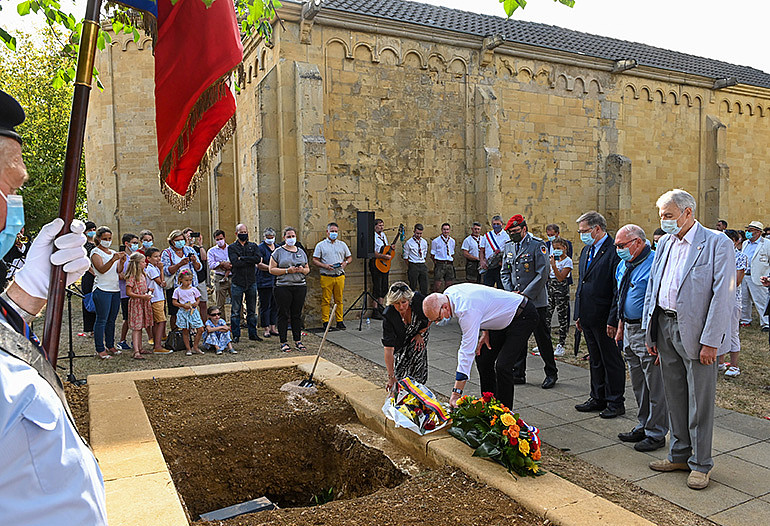
About 50 guests attended from local French communities, including the mayor of Gravelotte and representatives of the city of Metz. German representatives were also present. French flag-bearers paid respects to the dead during the burial service, accompanied by songs from German youth group members. Attendees placed flowers and crosses on the gravesite. MH

